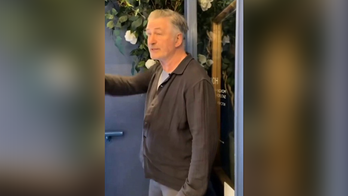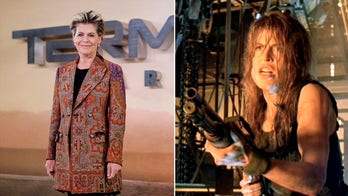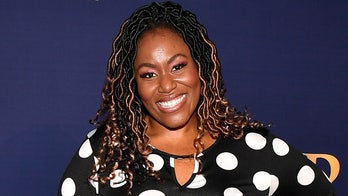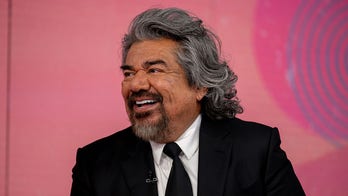Jamie Oliver debuts the second season of his Emmy Award winning “Food Revolution” on Tuesday. The program seeks to overhaul alleged unhealthy and poor-quality lunch foods served in the nation’s schools, and this time around, the British celebrity chef is targeting Angelenos.
But filming for the second season hit a snag when the Los Angeles Unified School District (LAUSD) refused to let Oliver and his cameras enter their schools.
“I’m really disappointed that I couldn’t get in there at all,” Oliver complained to the Associated Press last week. “I’m disappointed that as public servants, they feel they have the right to not be transparent.”
However, Robert Alaniz, Director of Communications for LAUSD told FOX411’s Pop Tarts column that they have nothing to be guarded about, and rejected filming “Food Revolution” based on a number of factors.
According to Alaniz, LAUSD was first approached about the production in November and was very interested, but after reaching out to the Cabell County School District, which represents Huntington, West Virginia – which was featured on Season One of Oliver’s show – they had some serious concerns.
“They (The Cabell County School District) told us they were not to talk about the show, but they said we better have a good team of attorneys if we sign up to do it and that was the first red flag,” he explained. “Then they said they were operating in the black before that, and after Jamie’s show came in, they were in the red: that was the second red flag. Then someone shared with us that Jamie brought all these chefs to prepare fresh food for the city, and Jamie’s show did not pay for it.”
A spokeswoman for the Cabell County School District would not comment as she “did not believe it would be responsible to make comment on an alleged comment from ‘someone’ in Huntington.” A rep for the district told the Associated Press that after Season One, although the show proved to be quite an ordeal, it was worth it.
Additionally, in weighing whether or not to be involved in “Food Revolution,” Alaniz asked why Los Angeles was Oliver’s focus in the first place, and became suspicious of the chef’s motives.
“It didn’t make sense to us that he would be coming to Los Angeles – Los Angeles is ranked 46 on Men’s Health ‘Fattest City in America’ list, so we weren’t sure why he wanted to film in L.A. We asked Jamie’s people and they said to us Jamie just wanted to live in L.A., which didn’t make it seem like he was committed to the cause,” Alaniz said. “We told him if he was really for the cause and would like to serve on our committee as a volunteer and help out without the reality cameras. They are distracting and we’re not interested in that distraction. We gave him another challenge to meet the food requirements and within our budget, then his folks said they couldn’t do it."
But Alaniz isn't against profiting from Oliver's expertise. "We welcome Jamie Oliver’s help if he is still committed to the cause," he said. "But just without the cameras.”
A rep for Oliver told us that the dialogue between LAUSD and Oliver remains ongoing, and that in order to tell the real story, Oliver feels the cameras are necessary.
“Jamie had no intention of portraying the district in a poor light, he simply was aiming to tell a story about what was happening so he can be part of the solution to improve school lunches. He believes very strongly in transparency in public institutions,” his rep said in response to LAUSD’s comments.
Regarding the claims that L.A was chosen simply because Oliver desired to live there, his rep said “L.A. was chosen for a number of reasons--because it has the second biggest school district in the nation and is a big market. Jamie always wants a big challenge.”
But LAUSD's hesitation has another root cause. The district was additionally hesitant to sign on to another reality program after a “bad experience” taking part in NBC’s “School Pride,” a show that followed the renovation of a different public school each week.
“In our defense, we had just had a bad experience with ‘School Pride’ and they said they wanted us to re-do some things on our campus and we ended up with a $106,000 tab for work they were supposed to do,” Alaniz said. “They did one coat of paint on one building and the paint was peeling in two weeks. The paint did not have any primer and they reneged on reimbursing us and we had to use tax payer money to fix that.”
NBC declined to comment, however a rep for the network pointed out an LA Times article in which the assistant principal of Compton Unified praised “School Pride” over the makeover of Enterprise Middle School, and noted the positive changes in the student body since their campus was reformed.
Furthermore, LAUSD insisted that they have nothing to hide from Oliver and his team, and are in fact very proud of the progress made in developing more nutritious meal plans.
“I’m very impressed by the improvements the L.A. Unified School District has made—from staff training to dramatically improving the quality of their school meals. And their menus for next school year are already ahead of the new healthier meal standards recently proposed by the USDA,” said Dr. Janey Thornton, USDA Deputy Under Secretary for Food, Nutrition and Consumer Services. “The district staff has worked hard to meet this benchmark while maintaining affordable food costs. I look forward to their continual progress in showcasing excellence and setting a high bar that will challenge other districts across the country.”
According to a 2008 Obesity Trends Report issued by the County of Los Angeles Department of Public Health, the percentage of obese children in Los Angeles County has actually stabilized over the last two years after increasing steadily from 18.9 percent in 1999 to 23.3 percent in 2005. The report also states that an important and contributing factor to this stabilization includes LAUSD having made major changes in school nutrition policies and programs, such as banning sales of unhealthy beverages like sodas on campus, and implementing improved food and beverage nutrition standards.
Oliver is not surrendering on his mission to reform the menus in L.A school cafeterias, and hopes that John Deasy, who takes over as superintendent of LAUSD on April 15, will help him.
“My goal is not to fight with the LAUSD,” Oliver said in a telephone news conference on Thursday to promote the show. “If John Deasy wants to talk to me and wants to do what I know the public wants… if he’s really clever, he’ll let us in for a filming and we can have dialogue.”
The Jamie Oliver Foundation is also working with the California Endowment and the American Heart Association in an effort to improve the diets of those residing in some of the city’s most desolate communities, and in the first episode of season two, is faced once again with resistance while trying to amend a fast-food menu.
Deidre Behar contributed to this report.






